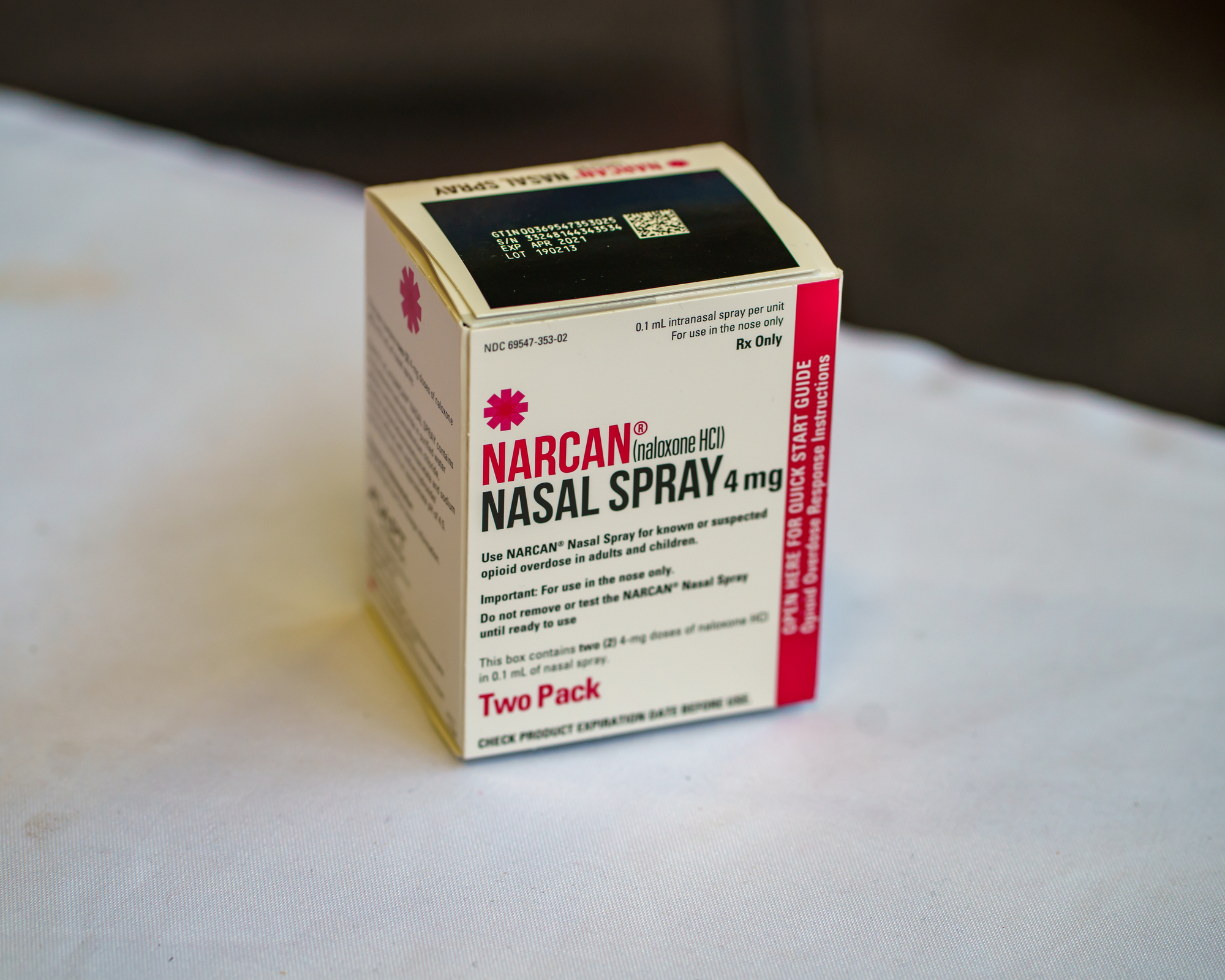

We may earn revenue from the products available on this page and participate in affiliate programs. Learn more ›
On Tuesday, the Food and Drug Administration (FDA) announced that it is moving towards approving certain over-the-counter Naloxone Hydrochloride products by filing a Federal Register notice on the safety and efficacy of the autoinjectors and nasal sprays that prevent opioid overdoses. This move will add on the FDA’s recent guidance on naloxone and expand access to the lifesaving medication.
Naloxone is a medication that restores normal breathing to someone experiencing an overdose when it is administered quickly. It attaches to opioid receptors and reverses and blocks the effects of the drugs and is most effective when used within minutes of the first signs of an overdose.
Currently, naloxone can be purchased at some pharmacies without a prescription in all 50 states. This is largely due to workarounds that pharmacies and state governments have created, such as one state health official writing one prescription that can be used by every resident of that state. The majority of states have adopted a mixture of third-party prescription laws and standing order laws that follow this procedure.
However, these kinds of workarounds are confusing and do not apply to private harm reduction services that purchase naloxone in bulk from pharmaceutical companies. Requirements and restrictions are placed on the buyers, such as having a physician sign for the order, but that doctor can only sign for an order for one such group. An address that is not a private home must also be provided. These are easy requirements for hospitals to fill, but not for smaller organizations working to prevent overdose deaths.
New FDA guidance clarifies that naloxone manufacturers should be able to provide opioid-overdose antidote directly to harm-reduction organizations.
“Physicians recognize the work of harm-reduction organizations and welcome the government’s willingness to remove obstacles as they—day in and day out—save lives,” said Bobby Mukkamala, MD, chair of the AMA Substance Use and Pain Care Task Force.
Further changes to these rules will expand access to the medication.
[Related: Chemists think they’ve found a way to make opioids less addicting.]
“Today’s action supports our efforts to combat the opioid overdose crisis by helping expand access to naloxone,” FDA Commissioner Robert M. Califf said in a statement. “The agency will keep overdose prevention and reduction in substance use disorders as a key priority and area of intense strategic focus for action as rapidly as possible.”
The Federal Register notice, titled Safety and Effectiveness of Certain Naloxone Hydrochloride Drug Products for Nonprescription Use, is aimed to increase and speed up the development and approval of nonprescription naloxone drug products. It includes data showing that certain naloxone products, up to four milligrams in a nasal spray and up to two milligrams in an autoinjector, may be safe and effective for nonprescription use.
This notice doesn’t cover all naloxone products, since more data is needed on the safety and efficacy of naloxone products administered in higher doses and those that use syringes or vials to be administered.
This step is not a final determination that these products are safe and effective for over-the-counter use, and it does not call for an immediate switch to nonprescription naloxone. The FDA needs more data to make its final determination, including logistical details like how the packaging and labeling can best explain how to use the medication.
[Related: The pandemic has had a dramatic effect on drug overdoses.]
An autoinjector containing naloxone was first approved by the FDA in 2014 (Evzio) and a single-dose nasal spray (NARCAN) was green lit in 2015. A large study found that opioid overdose deaths decreased by 14 percent in states after they enacted naloxone access laws.
In 2017, the opioid crisis was declared a public health emergency and the Department of Health and Human Services Department has renewed the declaration every 90 days since.
According to the Centers for Disease Control and Prevention (CDC), deaths from opioid overdoses have increased 65 percent during the COVID-19 pandemic. Deaths increased from 47,000 in 2019 to almost 78,000 in 2021. Additionally, over half a million people have died since 1999 from prescription opioids, heroin, and fentanyl.
Earlier this month, retail pharmacies CVS and Walgreens announced that they reached tentative agreements to pay about $5 billion each to settle thousands of lawsuits related to their role in the nation’s opioid crisis. Yesterday, Walmart announced their framework for settling $3.1 billion in lawsuits for their role in the epidemic.
Currently, there are more than 3,000 lawsuits against opioid manufacturers, distributors, and retail pharmacies accusing them for downplaying the risk of addiction and not stopping the pills from spreading illegally.
